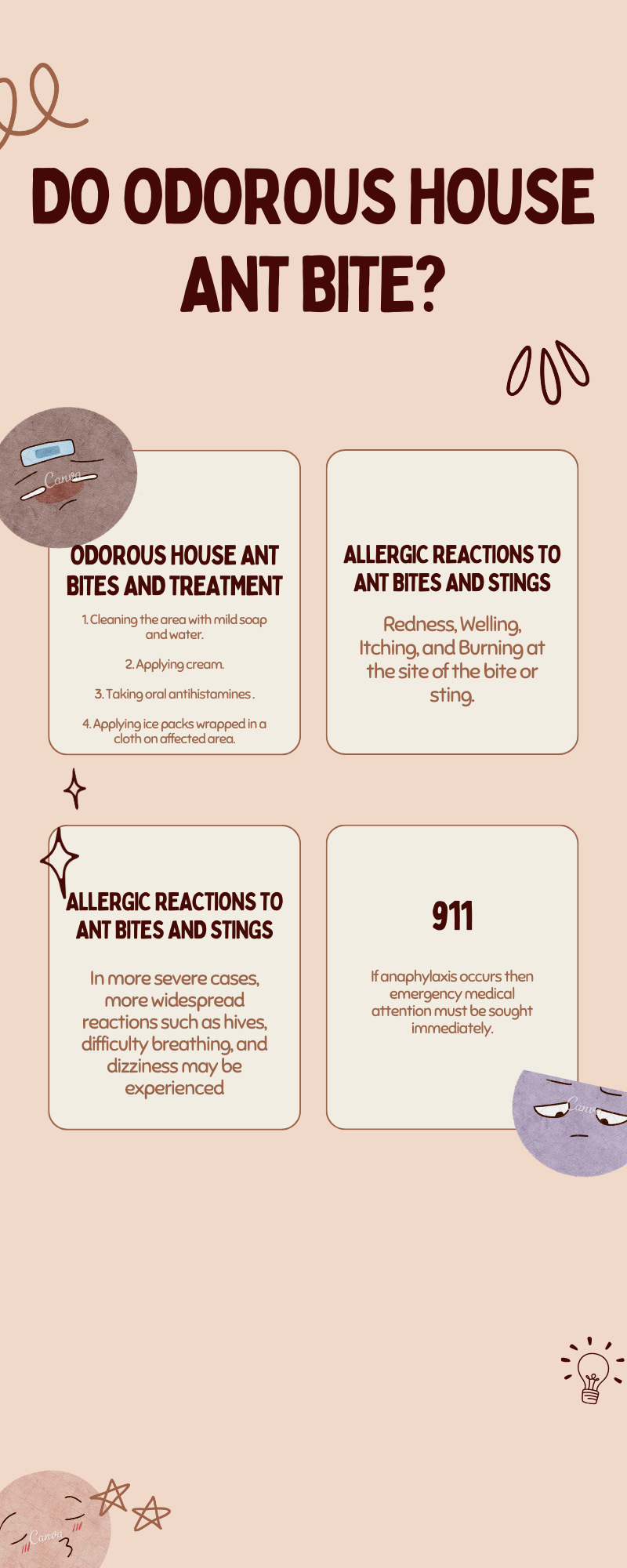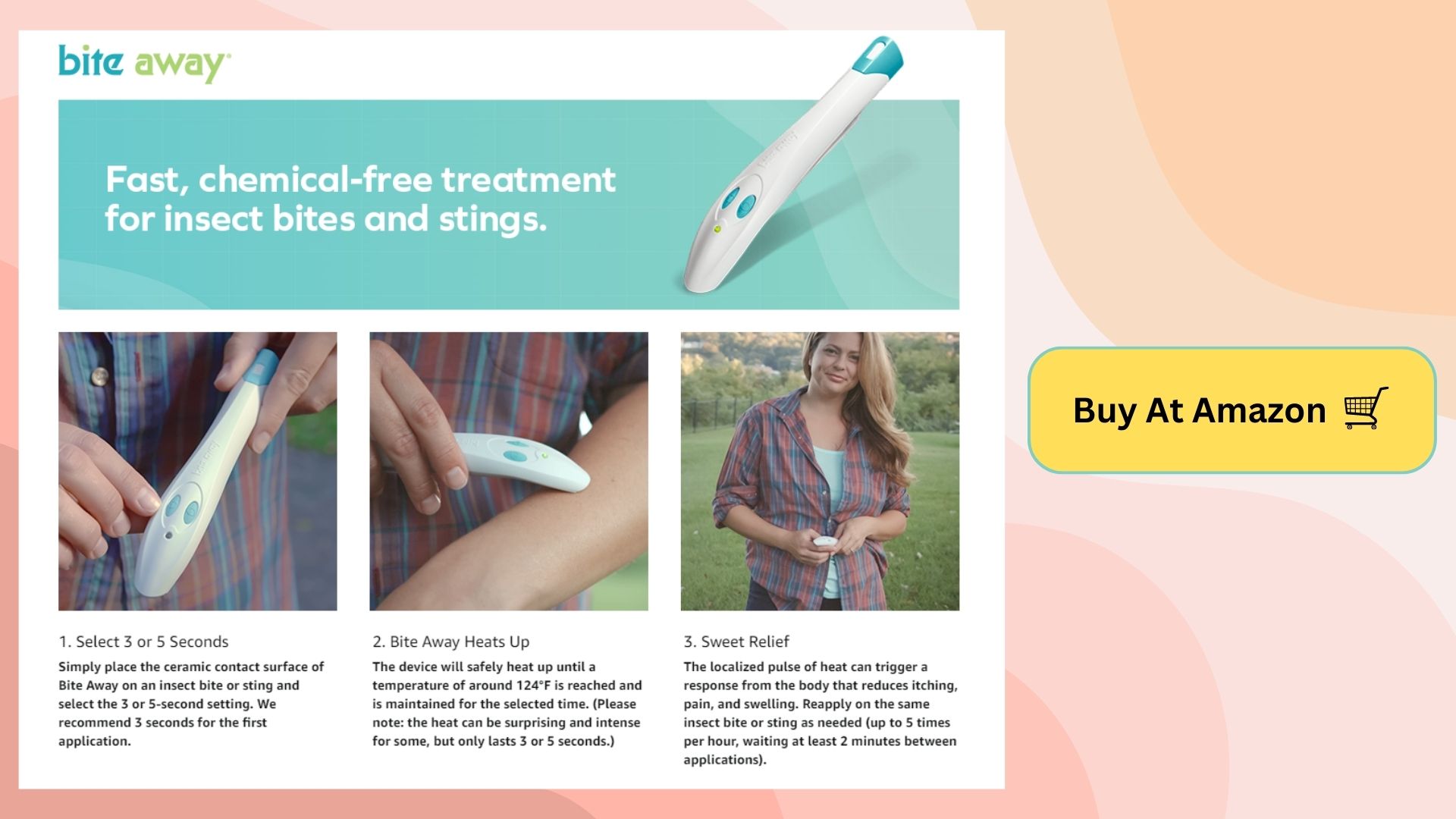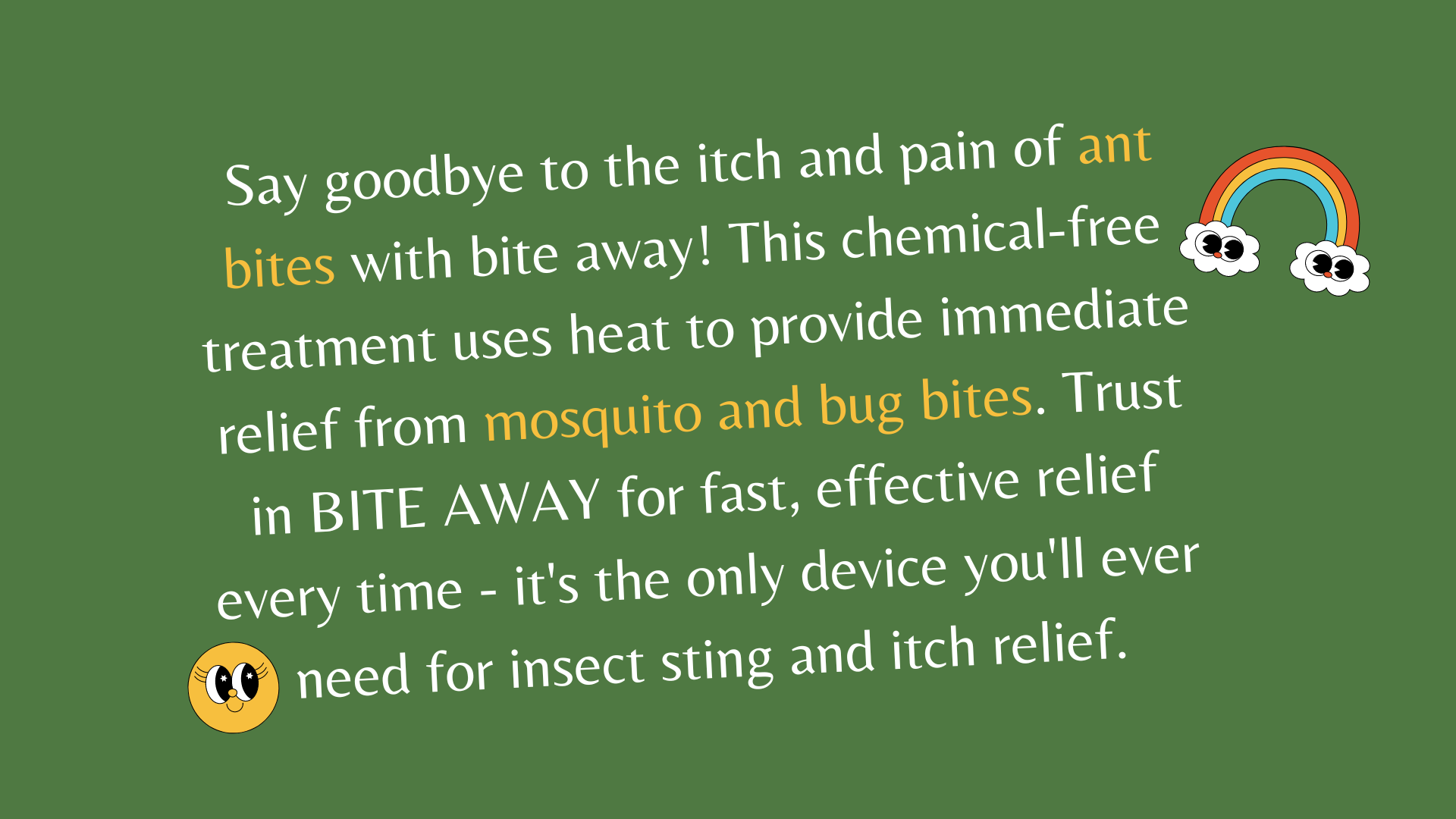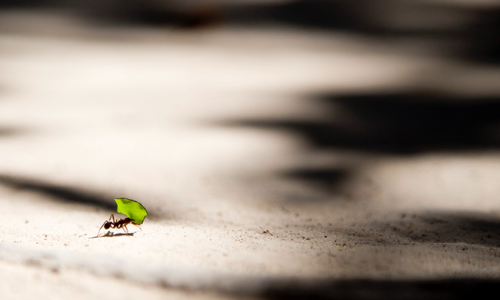Your PERSONAL ANT-CYCLOPEDIA
Odorous House Ant (Tapinoma sessile)
Odorous House Ant Scientific Classification
Phylum Belonging: Arthropods
Class of Belonging: Insects
Order To Which It Belongs: Hymenoptera
Family In Which It Is Located: Formicidae
Subfamily In Which It Is Located: Dolichoderinae
Genus: Tapinoma
Species: Tapinoma sessile

Post Audio Odorous House Ant
Ants are fascinating creatures that have fascinated scientists and enthusiasts alike for centuries. One particular species of ant, the Odorous House Ant (Tapinoma sessile), has been gaining popularity as a potential candidate for ant farming. Whether you’re looking to start your own ant farm or simply curious about these tiny insects, this blog post will provide you with everything you need to know about the geographic distribution, food sources, scientific facts and more on the odorous house ant.
So grab a cup of coffee and let’s dive into the world of Tapinoma sessile!
Odorous House Ant Identification
“Pest Stats”
| Color | From Brown To Black |
| Legs | 6 Legs |
| Shape | The gaster portion of the abdomen sits directly on top of the petiole in the abdomen of this species |
| Size | From 1⁄16 to 1⁄8 inches (1.5–3.2 mm) |
| Antennae | The antennae has 12 segments |
| Region | Native to North America and ranges from southern Canada to northern Mexico |
What do Odorous House Ant Look Like?
Description
Odorous house ants are small (1/16 – 1/8-inch long), dark brown to black in color, and have a single node between the thorax and abdomen. They also emit a foul-smelling odor when crushed.
Geographical distribution
The odorous house ant (Tapinoma sessile) is native to the eastern United States and can be found in most states east of the Mississippi River.
It has also been introduced to Europe, Australia, New Zealand, Hawaii, Canada, Mexico and Central America.
In the US it is particularly common throughout California and other western states.
Odorous House Ant Distribution Map In Us
Odorous house ants are mainly found in the southern United States, stretching from Texas and Oklahoma to Florida. However, they can also be found in parts of the Midwest and Northeast.
In general, they are more common near coastal areas and in urban environments where food sources such as pet food and garbage are abundant.
Odorous House Ant Arizona
Odorous House Ant California Supercolony
Odorous House Ant San Diego
Odorous House Ant Florida
Odorous House Ant Georgia
Odorous House Ant Hawaii
Odorous House Ant Los Angeles
Odorous House Ant Michigan
Odorous House Ant Supercolony Map California
Odorous House Ant Oregon
Odorous House Ant Ontario
Odorous House Ant Oklahoma
Odorous House Ant In Ohio
Odorous House Ant Texas
Odorous House Ant In California
Odorous House Ant Distribution By Country
They are found all across the world, from North America to Europe and beyond.
In Europe, odorous house ants can be commonly seen throughout England, Wales, Scotland and Ireland. Further south they can be found all along the Mediterranean Sea–from Spain through France into Italy then up through Greece till reaching Turkey in eastern Europe.
They have even been observed on many islands throughout this region including Cyprus off of Turkey’s coast.
Other areas where these ants may exist include parts of Asia such as India and Pakistan or regions within Africa such as Egypt or South Africa.
Odorous House Ant Australia (why was the Odorous House Ant introduced to Australia?)
Odorous House Ant South Africa
Odorous House Ant India
Odorous House Ant New Zealand
Odorous House Ant Philippines
Odorous House Ant Uk
Are Odorous House Ants In Canada
Odorous House Ant Argentina
Odorous House Ant Uruguay
Odorous House Ant Paraguay
Odorous House Ant Bolivia
Odorous House Ant Brazil
Odorous House Ant Distribution By Continent
North America: Odorous house ants are found throughout most of the United States and parts of Mexico.
Europe: Odorous house ants are found in some parts of western Europe, including France, Germany, Italy, Spain, Portugal and Greece.
They have also been reported from eastern European countries such as Bulgaria and Romania.
Asia: Can be found in Turkey and parts of India. They have also been reported from Japan and Korea.
Africa: Odorous house ants are common throughout much of sub-Saharan Africa but not often seen elsewhere on the continent.
Australia/Oceania: These ants occur in some coastal areas of Australia as well as New Zealand’s North Island.



Join The Ant Farming Club!
If you are looking for an Ant Farm and you don’t know which one to choose, or on the other hand you already have your first ant farm, but you don’t know how to grow your colony, take care of it or feed it. Here we offer you the best tips and products to make your colony grow healthy and strong.
In the next section, you will also find advice from professionals to choose the best products on the market such as:
- Luminous Gel
- Ant Farm Sand
- LED light
- Live Ants
- Full Ant Farm Kits For Kids
Ant Farming Club is perfect for kids wanting their first ant farm or schoolteachers wanting to show their students the biology of ants in a natural habitat.
Join
Join and learn all about the world of ants and ant farming.
Products & Discounts
Find discounts and advice from professionals about the best products on the market in 2022.
Meet
Connect with people who are passionate about the world of entomology.
Do Odorous House Ant Bite?
Odorous house ants generally do not bite humans, however if they are disturbed or threatened they may bite.
Odorous House Ant Bites and Treatment
The ant’s bites are not painful and cause no lasting damage to the skin; however, some people may experience an allergic reaction to the bite that can cause irritation and itchiness.
Treatment for a odorous house ant bite includes:
1. Cleaning the area with mild soap and water to remove any dirt or venom left behind by the ant.
2. Applying an over-the-counter cream or ointment such as hydrocortisone cream or calamine lotion to reduce irritation and inflammation caused by a reaction to the venom in the ant’s sting/bite.
3. Taking oral antihistamines such as Benadryl (Diphenhydramine) if there is swelling present after receiving a bite from an odorous house ant .
4. Applying ice packs wrapped in a cloth on affected area 20 minutes at a time over several hours for relief of itching and pain associated with allergic reactions from odorous house ant stings/bites.
Allergic reactions to ant bites and stings
Allergic reactions to odorous house ant bites and stings can vary from mild to severe.
The most common allergic reaction is localized redness, swelling, itching, and burning at the site of the bite or sting.
In more severe cases, more widespread reactions such as hives, difficulty breathing, and dizziness may be experienced. If anaphylaxis occurs where a person has life-threatening symptoms such as profound hypotension (low blood pressure), loss of consciousness or cardiovascular collapse are present then emergency medical attention must be sought immediately.
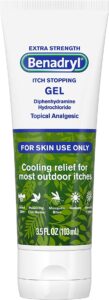
About this item
- Benadryl Extra-Strength Anti-Itch Gel temporarily relieves pain and itching associated with insect bites, minor burns, sunburn, minor skin irritations and rashes due to poison ivy, poison oak and poison sumac.
- Topical analgesic gel provides cooling, anti-itch relief from most minor pains and outdoor itches associated with insect bites.
- The cooling gel provides the relief of pain and itching associated with insect bites.

More Immediate Treatment management for Odorous Ant Bites:
Long-term Treatment management:
1. Avoid getting bitten by odorous ants in the first place: Ants are attracted to food sources, like sugary liquids and crumbs around the house.
Make sure that no food is spilled and all surfaces where people eat or prepare food are cleaned thoroughly. Fill any cracks or crevices in walls and flooring, which could provide an entry point for ants, with caulk.
2. If you have been bitten by an ant, wash the wound immediately with soap and water to help prevent infection as well as reduce irritation caused by the bite itself.
Apply a cold compress to ease pain and swelling if needed. Check your surroundings for any ants or ant colonies nearby so they can be removed before they become a larger problem in your home or yard.
3. Seek medical attention if there is excessive redness, swelling, fever, nausea or difficulty breathing at the site of the bite that persists even after washing it with soap and water; these may indicate secondary infection from bacteria carried on ant’s legs into skin wounds during biting/stinging incidents (referred to as “Formication”).
4 .Talk to your doctor about possible allergy testing if necessary (particularly important when odorous ants are concerned due their unusually potent venom), which can help identify what type of reaction occurs upon contact with this particular species of insect so appropriate precautionary measures can be taken moving forward – most importantly avoiding direct contact altogether!

About this item
- Benadryl Extra-Strength Anti-Itch Gel temporarily relieves pain and itching associated with insect bites, minor burns, sunburn, minor skin irritations and rashes due to poison ivy, poison oak and poison sumac.
- Topical analgesic gel provides cooling, anti-itch relief from most minor pains and outdoor itches associated with insect bites.
- The cooling gel provides the relief of pain and itching associated with insect bites.

YOU CAN ALSO LISTEN HERE!
Audio Odorous House Ant 2
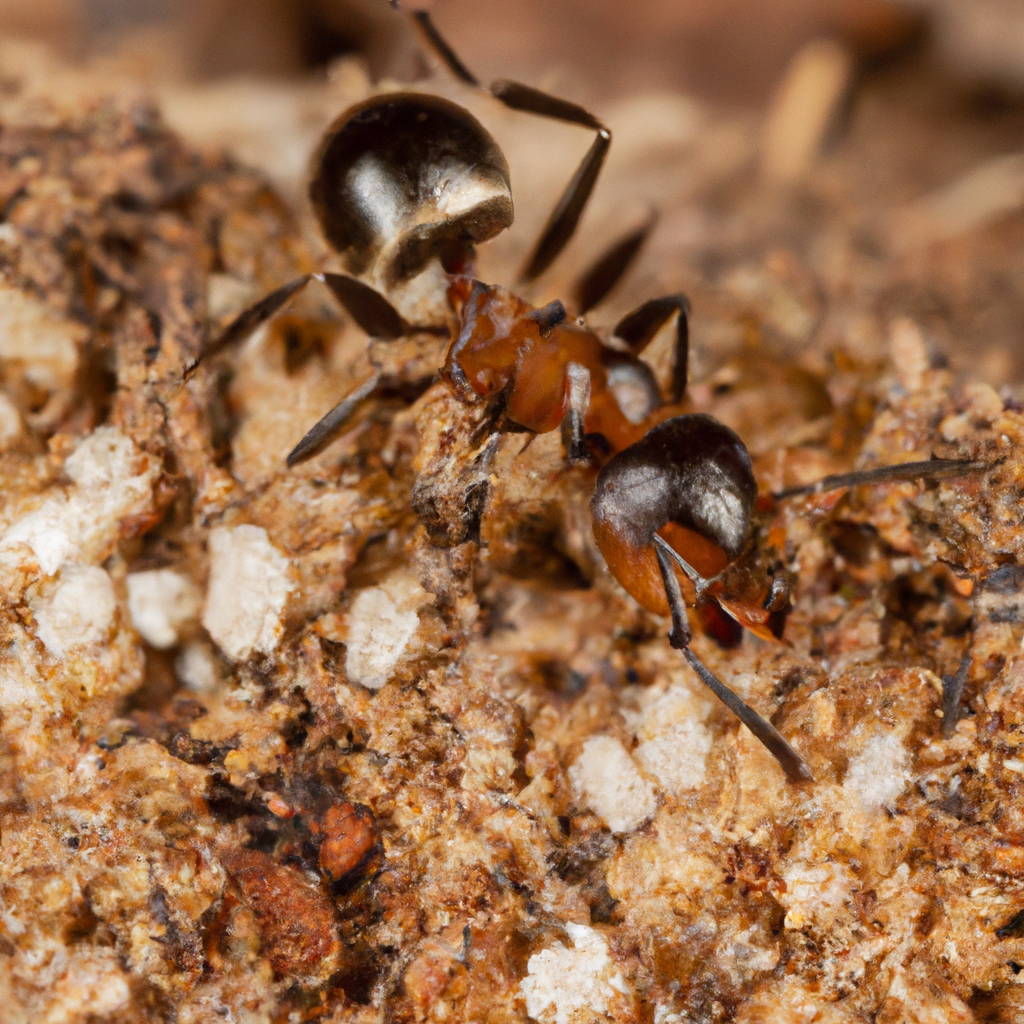
Natural Behavior Odorous House Ant
The natural behavior of odorous house ants is to forage for food and build nests. They will explore their environment with a process called “trailing,” where they lay down an invisible pheromone trail as they move, which other ants can follow back to the nest.
Odorous house ants feed on sweets like honeydew and plant sap, as well as proteins like insects or dead animals.
These artropods also love grease and are often found near stovetops or ovens in search of fatty foods.
To protect their colonies from predators, these ants release a strong smell when crushed that gives them their name—odorous house ant.
In addition, Odorous House Ants also have a distinctive nesting behavior and are known for building colonies in damp, dark areas such as under stones, logs, and in wall voids.
These ants can become a nuisance pest in homes and commercial buildings if left unchecked.
Proper pest control measures can help to manage and prevent infestations.

Funny Fact About Odorous House Ant
The answer lies in the ant’s defense mechanism
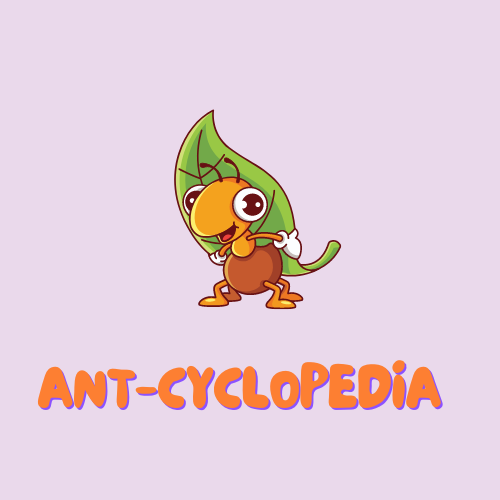
When threatened or killed, these ants emit a chemical compound called formic acid. This acidic substance is not harmful to humans but has a pungent odor that resembles the scent of rotten coconuts. The formic acid serves as a warning signal to other ants in the colony and deters predators from attacking them.
Interestingly enough, this unique defense mechanism is not exclusive to odorous house ants. Many other species of ants also produce formic acid for protection purposes. However, only this particular species releases an odor that can be easily identified by humans.
So next time you come across an odorous house ant and notice its distinct smell after crushing it accidentally or intentionally (we don’t judge), remember that it’s just trying to protect itself and warn others in its colony!
Odorous House Ant Photos And Pictures



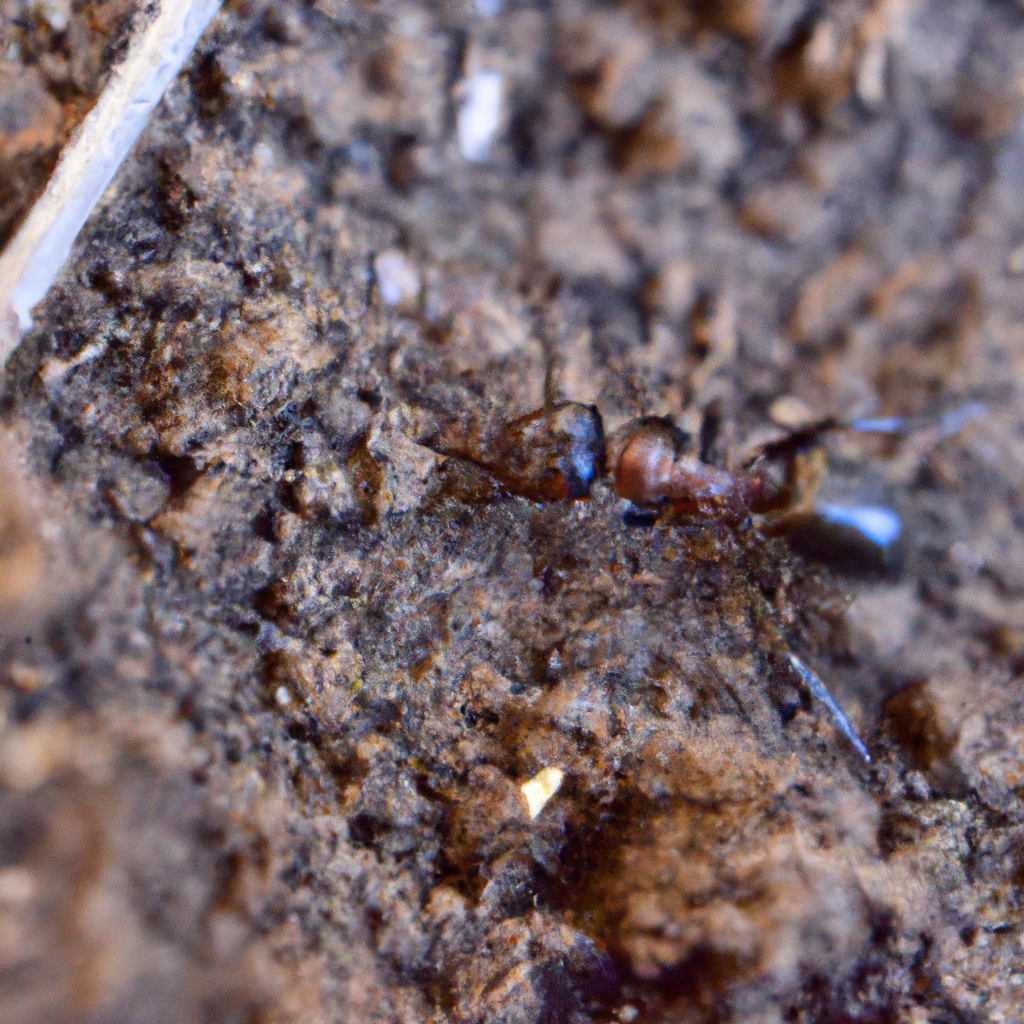

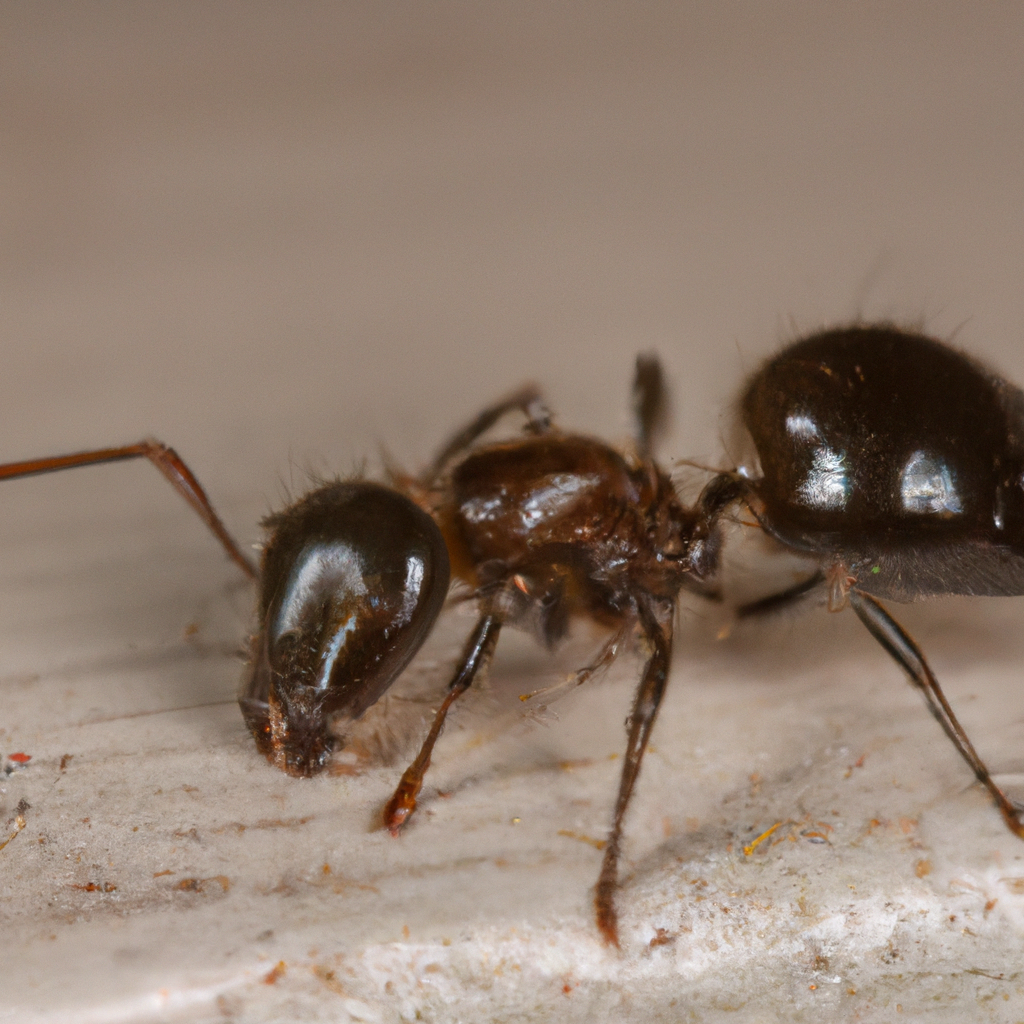

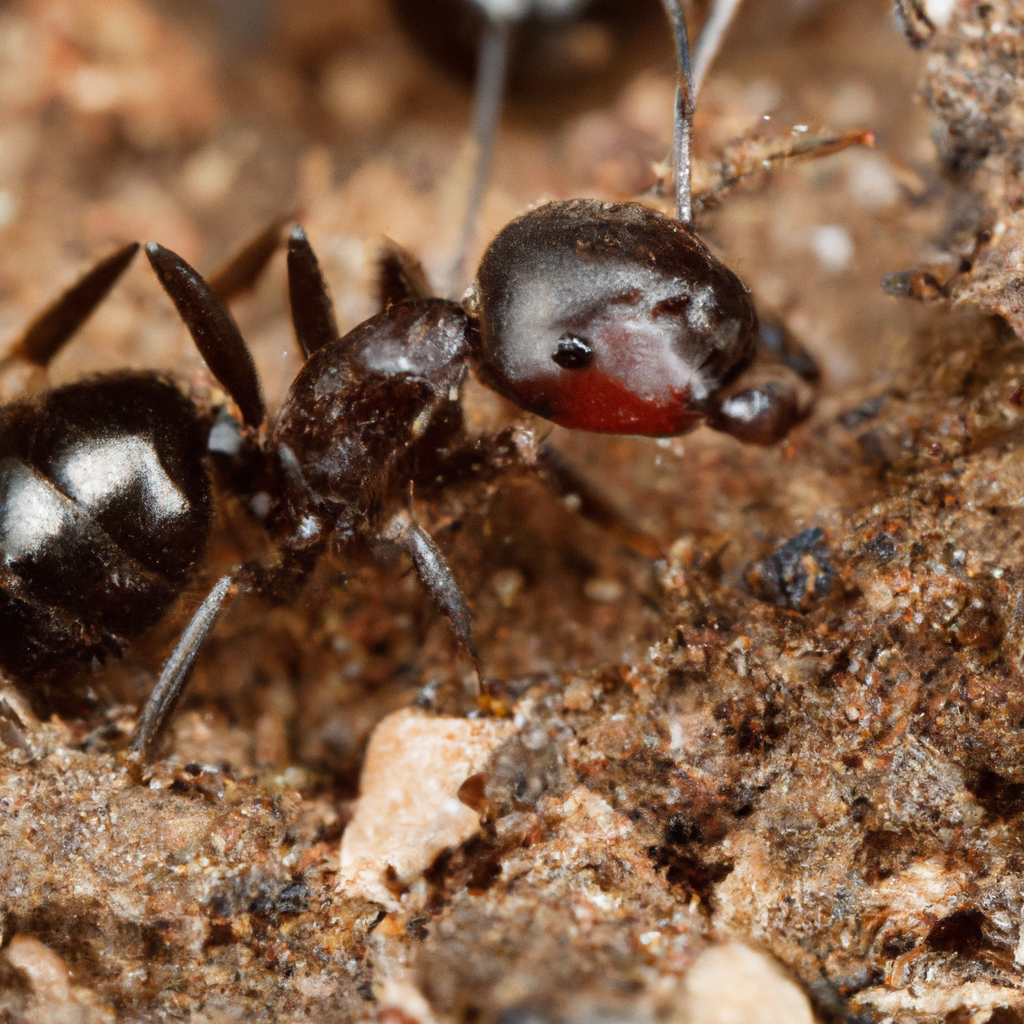
Seasonal Colony Trends [All You Should know]
Odorous House Ant Reproduction (Reproductive Biology)
Habits
Odorous house ants are social insects and reproduce through the process of nuptial flight.
During this process, winged males and females fly from their nest in search of a mate. After mating, the female will return to her nest to start a new colony.
The fertilized female will then lay eggs which hatch into larvae after about 7-10 days. The larvae feed on food stored by the adult workers until they reach adulthood 3-4 weeks later when they can become workers themselves or future queens if given an ample amount of food during larval development.
Odorous House Ant Environmental Impact
These ants can have a significant environmental impact in their native habitats. They are known to displace other species and disrupt the natural balance of ecosystems.
Additionally, because they feed on other insects, plants and fruits, they can reduce beneficial populations of those species as well. They may also spread disease-causing bacteria between different plants or animals in an ecosystem by carrying it from one place to another.
Finally, odorous house ants may compete with native ant species for food sources and nesting sites that could further disrupt the delicate balance of an environment.
Odorous House Ant Human Impact
Threats To Humans (Odorous House Ants harmful?)
The Odorous House Ant can have major human impacts. This type of ant is a nuisance pest that can contaminate stored food and cause damage to structures by nesting indoors.
They are also known to bite, which causes irritation and discomfort in humans.
In addition, these ants emit an unpleasant odor when crushed, making it difficult for people to be around them.
Finally, they can spread disease-causing bacteria through their trails or nests.
YOU CAN ALSO LISTEN HERE!
Post Audio Odorous House Ant 3


Odorous House Ant Education (Odorous Ant Life Cycle)
1. Egg: The female ant will lay eggs in special chambers located within the ant nest. These eggs are white and very small, usually less than 1 millimeter in diameter.
2. Larva: After several days, the eggs hatch into larvae which look like legless grubs and feed on food provided by the adult ants.
3. Pupa: The larvae molt three times before entering a resting stage known as pupation where they spin a cocoon around themselves to protect them from predators and environmental hazards while they transform into adults (metamorphosis). This process can last anywhere from one week to several months depending on species and environment.
4. Adult: Once transformation is complete, an adult odorous ant emerges with wings that it uses for short flights during mating season or when looking for new nesting sites away from their original colony location. Odorous ants live between 3-5 years after reaching adulthood and are capable of producing hundreds of offspring during this time frame by laying up to 30 eggs per day throughout the spring/summer season only!
Habitat
Odorous ants typically make their nests outdoors in soil, often near a water source. They can also be found nesting in wood piles or logs, under stones, and around the bases of trees or plants. Indoors they may nest behind baseboards, under carpeting and linoleum flooring, inside walls, under cabinets or furniture and even in potted plants.
Environmental Requirements
1. Odorous ants prefer warm, humid climates and are most active in temperatures between 70-80 degrees Fahrenheit.
2. They require high humidity, usually around 80%.
3. A damp soil is also necessary for their nests; this can be provided through sprinklers or drip systems that provide water to the ant hills on a regular basis.
4. Access to food sources like crumbs, sweet fruits and liquids should be available as well as plenty of protein sources such as other insects, meats and eggs.
Odorous House Ant Nutrition And Diet
The odorous house ant, like other ants, obtains its nutrition through a variety of sources.
They primarily feed on honeydew from aphids, which is made up of plant sap and sugars.
They also eat small insects and meat scraps (including pet food).
In addition to these protein-based foods, they also consume carbohydrates such as fruit juices or nectar from flowers. Odorous house ants will often forage in kitchens for sweet materials like syrup or jelly, as well as greasy substances like butter and peanut butter.
Nests and Colonies
These artropods build nests in a variety of places, including inside walls and under furniture.
They create colonies with many workers that can range from hundreds to thousands of individuals.
The nest is typically hidden in crevices or other small spaces and will have multiple chambers connected by tunnels. Odorous house ants often enter structures through cracks around window frames, doors, and utility pipes. Inside the structure they are attracted to food sources such as sweets, fats and proteins which are stored in pantries, cupboards or drawers; as well as moisture sources like sinks, bathtubs or showers.
Odorous House Ant Queens
The Odorous House Ant Queens are the founders of their colonies, and they do it with precision and care.
Odorous Ant Queen Appereance
Odorous house ant queens are typically between 3-5 mm in size and usually have a darker coloration than the worker ants.
The abdomens of the queens are more rounded than that of worker ants, allowing them to store greater amounts of fat and resources to start a new colony.
Their heads also possess larger eyes which help them better locate potential nesting sites.
Purpose In The Colony
They select a suitable location for their home to provide a safe haven for themselves and their future offspring.
Once settled in, these queens exhibit remarkable behavior; they lay eggs that hatch into worker ants who take care of everything from food gathering to nest maintenance.
The queen’s purpose in the colony is significant, as she is responsible for reproducing and maintaining the ant population in her colony. To ensure her survival, she feeds on nectar from plants or honeydew produced by aphids – which means that these Odorous House Ant Queens have quite an exquisite taste! These queens also consume other insects when necessary to supplement their diet with protein-rich meals.
With such critical roles in building and maintaining thriving colonies, it’s no wonder why these Odorous House Ant Queens are so highly regarded within their communities!
The Best Products 2023
Formicarium
Formicarium
Ant Farm
Ecosystem
Entomology supplies
Test Tube Packs
Pipettes
Feeding Dishes
Ant Foods
Ant Nectar
Feeders
Eco-Fresh Rice Worms
Fly Larvae
Kits
Terrarios
Nest Kit
Ant Farm Sand
Ant Farm Neon Gel
YOU CAN ALSO LISTEN HERE!
Post Audio Odorous House Ant 4
Odorous House Ant Pest Prevention & Control
On the other hand, it is not a secret to anyone that odorous ants can invade any space, including our homes. This can be extremely uncomfortable, especially because of the strong odor that these ants give off when they are crushed. But it is not necessary to go to that extreme, since killing ants in this way is not only uncomfortable, but also not efficient.
In this section, we are going to provide you with the definitive guide to prevent and control these persistent pests. From natural methods to professional pest control options that the market offers us.
Here you will find everything you need to control your pest problem and avoid headaches.
Prevention
1. Seal off all potential entry points into your home, such as cracks and crevices around windows, doors, and pipes. Use caulk or weather-stripping to do this.
2. Store food in airtight containers to minimize odors that may attract ants into your home.
3. Keep counters clean and free of crumbs, sugar spills, and other food debris that could attract ants from outside your home.
4. Regularly vacuum floors and furniture in order to remove any ant trails leading inside the house from outside sources (such as trees).
5. Make sure pet food dishes are regularly cleaned up after meals so they don’t act as a source of food for invading ants.
Wanna learn more about Ants? Join an Online Community of more than 1000 Readers Around the Country.
Here you can sign in to our newsletter to receive daily emails with funny facts, interesting details about ants, step-by-step tutorials, and even good practices to have a healthy ant farm colony. We’ll be more than happy to have you in…

How to Get Rid of Odorous House Ant (Easy Steps)
1 – First Step: Inspection & Control
The first step in controlling odorous ants is to inspect the area where they are found.
This may involve inspecting for nests and other signs of their presence, such as trails or food sources.
Regular inspections should also be conducted to ensure that no new colonies have established themselves.
2 – Second Step: Natural Methods To get rid of Odorous House Ant
Outdoor And Indoor Organic Odorous Ant Pest Control Products
Diatomaceous Earth
Diatomaceous Earth is a naturally occurring soft sedimentary rock that has been ground down to a fine white powder.
This powder damages the exoskeleton of insects, so it acts as a barrier that Odorous House Ants won’t cross.
If you have potted plants on a shelf, you can put a small amount of diatomaceous earth down by the legs of the shelf, preventing ants from getting up onto the plants.
These barriers can be put virtually anywhere, both indoors and outdoors.
While Diatomaceous earth is safe for humans to handle and even eat, it does create fine dust that should not be inhaled.
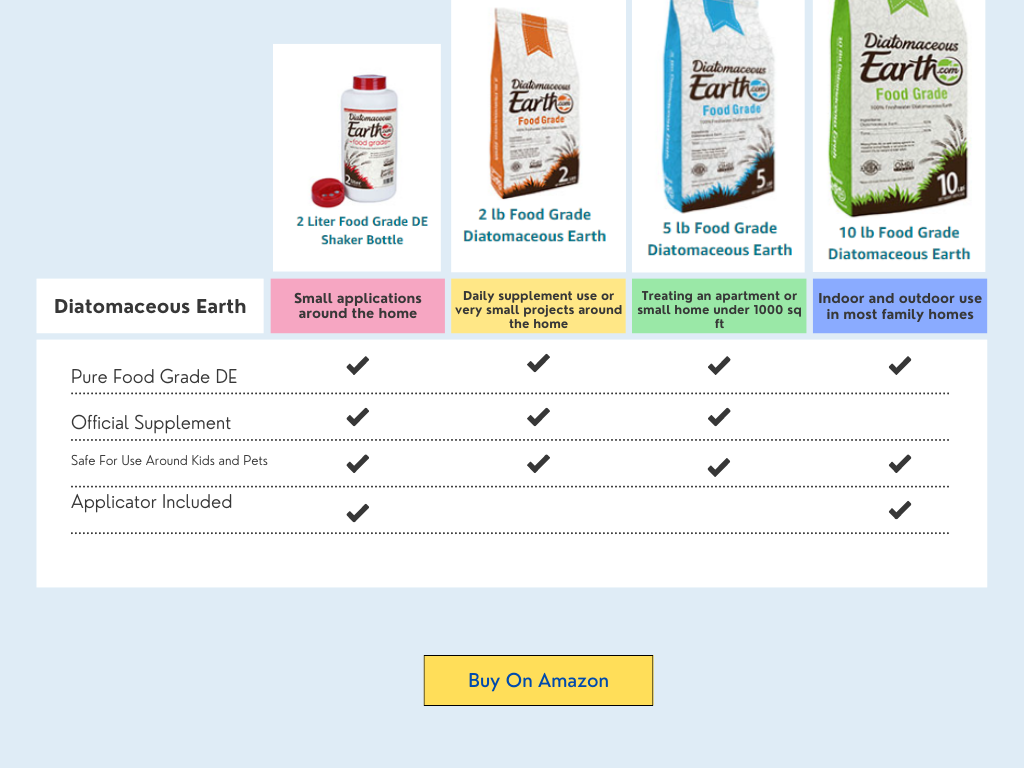
PROS About Diatomaceous Earth
Among its most striking advantages is the low risk to the health of people, children, and pets, as well as the residual years that this compound can have in our home, providing extra protection against pests. This material is not recommended for use on carpets or floors that you would vacuum.
CONS About Diatomaceous Earth
Although this product represents a non-chemical solution to avoid chemical pesticides. This powder can have some drawbacks. An example of this is that insects need to have direct contact with the material, as well as prolonged contact for it to have a greater effect. This means, that if we decide to use this. We must distribute it throughout our home in large quantities. On the other hand, Diatomaceous Earth must be kept dry, so it is not a good idea if we want to use it in our gardens that are damp from irrigation.
Despite its low toxicity. This material could not be used to kill ants if it did not have some level of danger to the health of insects, so the use of dust masks is recommended, as well as applying it in ventilated areas since this dust could cling to the mucous membranes of the nose and mouth. Also, the dust could fly and generate allergies if we apply it in places where there are fans or air conditioning.
Boric Acid
Boric Acid is a type of Acid found in many naturally occurring minerals, such as borax. Borax is found in many cleaning products, including some types of toothpaste.
Boric Acid has a very low toxicity level for mammals but not for ants. It interferes with their digestive system and slowly terminates them.
The trick is to keep the level of boric Acid low enough so that it travels through the colony and makes it to the queens and young before killing the ants.
I will give you a personal recommendation of a product that is currently on the market called Terro. This contains borax, and I found it effective against Odorous House Ants.
You can also find recipes online to make your own bait at home using borax. (Here are the steps if you are interested)

PROS About Boric Acid
This product dissolves easily in water, which allows us significant savings. On the other hand, it is more granular than powder. Which makes it less likely that we will inhale it by mistake.
It is useful for other types of pests, such as cockroaches.
CONS About Boric Acid
In very humid climates, if not stored properly, it can become damp and ruined. Therefore, it is recommended to store the mixture in a gallon Ziploc bag to keep it dry and protected when not in use.
Essential oils
Odorous House Ants communicate with each other using pheromones. A forager that finds food marks a trail on the way back to the colony. This scent trail is followed by other ants, and these ants then reinforce the trail when they head back to the colony with food.
Pheromones also help ants tell each other apart, warn each other of danger and communicate all sorts of messages we’re only beginning to understand.
Most essential oils have a very strong fragrance. We can use this strong fragrance to mask pheromone trails and disrupt the coordination of ants. This method, in addition to being very efficient, allows you to drive away the ants in a natural way without causing them harm.
Essential oils can be added to soapy water that can be used to clean pots and shelves where we keep cacti and succulents. This will mask any previous messages ants left behind to tell other ants… HEY! There is a good food source, water, or shelter.
My Favorite essential oils to use for ants are:
- Peppermint
- Cedarwood
- Lemongrass and
- Clover
However, there is a high range of essential oils that we can use to keep ants away from our homes. Below we offer you a select list of the most efficient oils with the best results on the market.

Pros About Essential Oils
These essential oils represent rapid elimination and residual repellency. which means many months of additional protection.
On the other hand, this represents a highly respectful pest control with our environment.
In the case of living with other beneficial insects for us, such as bees or other pest-control insects. These represent minimal risk.
Finally, as we all know. Essential oils offer us a natural and pleasant fragrance for our home.
Cons About Essential Oils
Essential oils are very useful for many purposes despite their effectiveness in pest control. We may need large amounts to eradicate large ant colonies. Essential oils are expensive, so it can cost us a few dollars to completely eradicate an ant colony.
3 – Third Step: Insecticides and Ant Baits To Control Odorous House Ant (Best Odorous Ant Killer)
Best Ant Bait For Odorous House Ant
We recommend using an ant bait containing borax or boric acid as the active ingredient. These baits have been proven to be very effective at controlling odorous house ants and other species of ants.
Place the bait in areas where you’ve noticed ant infestations, such as near windows, doors, baseboards, plumbing fixtures and other points of entry for these pests.
Be sure to keep children and pets away from any ant bait products!
MORE ODOROUS ANT BAITS
- Baits (protein/fat-based baits).
- Honeydew Aphid Baits
- Nectar baits
- Plant product baits as well as sugary carbohydrates.
Sugar feeding cycles
Odorous house ants feed on a variety of sugary food sources. They often go through cycles of activity in their foraging, beginning with sugars and then moving to other types of foods.
During the summer months, they feed mainly on honeydew from aphids or honeydews and nectar from flowers; during the winter months they switch to protein-based diets such as insects, seeds, and pet urine droplets.
Odorous house ants also consume plant sap exudates and juices from fruits or berries when available, though not as frequently as other sugar sources.
Odorous House Ant Protein/Fat Feeding Cycles
The odorous house ant (Tapinoma sessile) is primarily a scavenger, so its diet varies widely depending on what food sources are available.
They typically feed on proteins as well as fats and carbohydrates. Proteins can come from dead insects, other arthropods, or even fish and meat scraps found in the environment.
Fats may include oils from seeds or nuts and carbohydrates can be found in sugary materials such as honeydew secretions left by aphids or plant saps. In addition to these foods, odorous house ants will also sometimes feed on fungi spores and bacteria growing around their nest sites.
The feeding cycles of these ants tend to vary seasonally due to availability of different food sources throughout the year.
Odorous House Ant Control Using Insecticides
1. Choose an insecticide labeled for odorous house ant control. Be sure to read and follow all safety precautions listed on the label of your chosen product prior to use.
2. Create a barrier around the perimeter of your home by spraying the insecticide in areas where ants are most likely to enter, such as windowsills, door frames, under baseboards, around utility pipes or wires entering from outside walls, and near other points of entry.
3. Apply a light dusting or spray of insecticide directly onto any mounds you may see in your yard or garden that could be harboring ant colonies; this will help prevent additional infestations in and around your property.
4. Treat any cracks or crevices inside the home with a crack-and-crevice application tool (such as a handheld duster) filled with insecticide dust; be sure not to overdo it so that you don’t create chemical runoffs into living spaces or food preparation surfaces!
5 Place bait stations containing liquid ant baits in areas known for high levels of activity; when placed correctly these can quickly eliminate large populations without having to spray every corner of your home with insecticides!
Pesticide
Odorous House Ant Control Using Pesticides
1. Locate the nest: Use a flashlight to look for ants during night time, when they are most active. Pay attention to areas where food and moisture can be found, such as near sinks or drains, pet food bowls, and food storage containers.
2. Seal entry points: Inspect your home’s foundation perimeter for cracks or gaps that could allow odorous house ants access to the inside of your home. Fill in any holes with caulking or durable foam sealant around pipes and utility lines coming into your home from outside sources.
3. Apply pesticide baits: Place ready-to-use ant bait stations along baseboards in kitchen cabinets, pantries and other areas where you have seen odorous house ants congregating . Reapply ant bait as needed until all signs of activity have stopped..
4 Monitor pest populations: Regularly inspect your homes interior and exterior for signs of ant activity after applying pesticides.
If you continue to find evidence of an infestation even after using pesticides then consider calling a professional exterminator who is trained in handling situations like this one effectively and safely.
Subfamilies Of Ants
View More
View More
Ant SubFamily Group 3
View More

Did You Know That…
Yes, residual sprays and aggressive sanitation can indeed stress colonies of odorous house ants causing them to scatter.
This is because the chemical residue in the spray and the disruption caused by aggressive sanitation disrupts their colony structure.
Some species of odorous house ant may even go into a state known as ‘rebelling‘ where they actively leave their nest in search for another one or seek out food sources outside of the colony to feed on.
YOU CAN ALSO LISTEN HERE!
Post Audio Odorous House Ant 5
How to Raise an Odorous House Ant Colony? The Ultimate Guide
As a kid, I was always fascinated by bugs. I would go out into the yard and catch grasshoppers, beetles, and anything else that caught my eye. My mom would always tell me to be careful of the ants because they could bite, but I never listened. I would pick them up and examine them, trying to figure out what made them so different from the other insects. It wasn’t until I started ant farming that I really began to understand these creatures.I started my first colony when I was 10 years old, with a few dozen workers and a single queen.
I remember feeling so proud as I watched them build their nest and care for their young. Over the years, my colony grew and prospered. I began to learn about the different species of ants and their behaviors. I even started selling some of my colonies to other people who were interested in starting their own.
Now, at 25 years old, I am one of the leading experts on ants in the world. I continue to nurture and grow my own colonies, and study these amazing creatures every chance I get. Who knows what new discoveries await us in the world of ant farming?
Chapter 1: Getting Started in Odorous House Ant Keeping!
How to get a Odorous House queen ant?
Odorous House queen ants are not typically available for purchase. However, some ant farms may be able to supply you with one or more of these species. You can also find Odorous House queens in the wild by searching through soil and wood in areas where this species is known to inhabit.
How to identify a Odorous House queen ant?
They are typically identified by their small size – about 1/16th of an inch or smaller – and the characteristic pungent odor they give off when crushed.
They also have a distinct three-segmented body with a broad head, thorax, and abdomen. These queens will often be seen in the center of large colonies of worker ants in your home or outside on trees and other vegetation.
If possible, it is best to look for these characteristics before attempting to identify any queen ant.
Time for a queen ant to start a new colony
It typically takes a queen ant between one to three weeks to establish a new colony.
Capture the Odorous House Ant queen with care.
To capture an odorous house ant queen, you’ll need some basic supplies.
You should get a small jar or container with a lid that is large enough to fit the queen but also has airholes to allow her to breathe.
Place something smooth and non-stick in the bottom of the container, such as wax paper or aluminum foil. This will give her something stable to stand on while you transfer her from one place to another.
Next, using tweezers, carefully pick up the queen and put her into the container with some food for sustenance (raisins work well). Securely fasten the lid onto the jar and transport it away from its old nest location so it can’t find its way back home. Once at your new destination, provide appropriate nesting materials within your chosen enclosure like wood chips or sand—this helps ensure she feels safe and secure in her new home!
How to feed your Odorous House Ants
1. Provide them with sugary food sources such as honeydew, syrup or jelly.
2. Place fruit peels and other sweet foods around the ant nest.
3. Offer protein-rich foods like peanut butter, crackers, cooked eggs and small pieces of meats (cooked) near the ant nest.
4. Place a few drops of water near the ant nest to help supply moisture for your ants if you are living in a dry environment.
5. Use commercially available ant baits that contain sugar and protein at least once per month to supplement their diet and help control populations within the home/structure as needed.
Grow the colony and take even better care of your new family.
I am starting the breeding of Odorous House Ant!
1. Find the Colony: Before raising an odorous house ant colony, you’ll need to find a suitable place for them to live. Look around your home or yard for potential nesting sites such as cracks in wood, under rocks or logs, and inside walls. You may be able to spot the ants themselves scurrying around looking for food or water sources.
2. Create a Nesting Area: Once you’ve identified a good location, create an area specifically dedicated to your ant colony by lining it with materials such as soil, sand, gravel and pieces of bark or twigs. Make sure there are several small entrances in case they want to explore their surroundings further later on!
3. Collect Food & Water Sources: Odorous house ants feed primarily on sugars from fruits and other sweet items like honeydew melons and maple syrup; keep these things nearby so that the ants can easily access them when they need sustenance throughout the day. Place shallow dishes of water near their nest as well since this species loves moisture—just make sure it isn’t too deep because drowning is possible if not careful!
4 . Monitor Your Colony’s Progress: If all goes according to plan then after few weeks of having setup up their new home–your odorous house ant colony should start thriving! Keep an eye out for signs of happiness such as increased movement around their nest site (i..e more workers carrying food back) and little trails being formed throughout your home/yard – this indicates that they’re actively exploring what’s available within its vicinity which means success has been achieved!
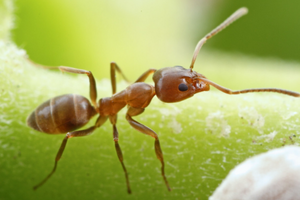
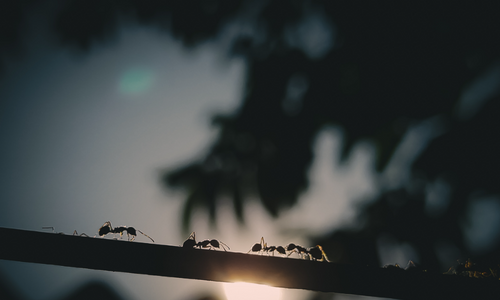


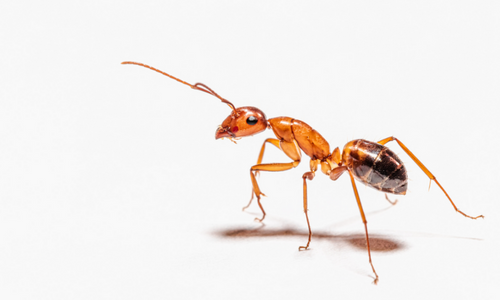
The Best Products 2023
Formicarium
Formicarium
Ant Farm
Ecosystem
Entomology supplies
Test Tube Packs
Pipettes
Feeding Dishes
Ant Foods
Ant Nectar
Feeders
Eco-Fresh Rice Worms
Fly Larvae
Kits
Terrarios
Nest Kit
Ant Farm Sand
Ant Farm Neon Gel
Ant Farm Ecosystems
| Ant Farm For Classroom | Light-up Ant Habitat |
| Ant House With Feeding Area | Wall Hanging Ant Farm |
| An ecosystem with live ants | Ant farm for Preschool |
| Pet Anthill Ant House | Nest Insect Castle |
| Glow In The Dark Ant Farm | Aquariums For Ants |
| Ant Farm With Instructions | Ant Farm With Queen |
| LED Ant Farm for Live Ants | Connectable Ant Farm |
| Ant Farm For Kids | New Large Plaster Ant Farm |
| Pocket colony | Ant Farm With Queen |
Ant Farm Supplies
| Feeder | Feeding Area |
| Tunneling sand | Tunnel starter tool |
| Ecological Ant farm gel | Ants farming aphids |
| Nutrition and Care | Ants farming mushrooms |
| Ecological blue gel | Fungus for ant farms |
| Handcrafted Wood | Ant habitats |
| Ant Plastic Tubes | Ant Glass Tubes |
| Food for ants | Ant Farm Nectar |
| Ant Farm Live Insects | More Supplies |
Live Ants For Sale
| Live Ants | Best ant species |
| Coolest Ants To Keep | Interesting Ants |
| Fungus-farming ants | Exotic ants |
| Big Ants | Buy Queen Ant |
| Buy Worker Ants | Buy Soldier Ants |
| Domestic ants | Fungus farming ants |

